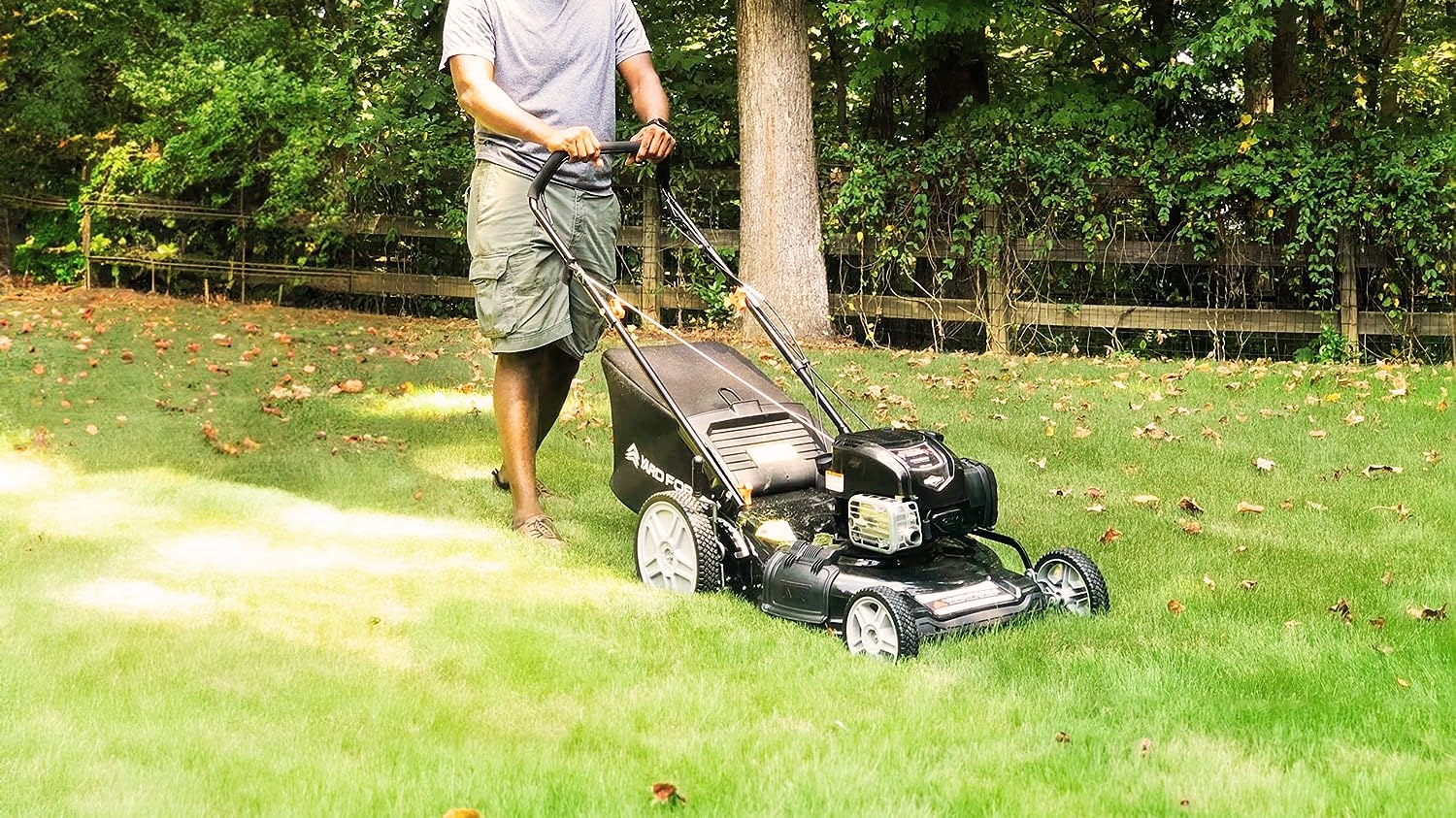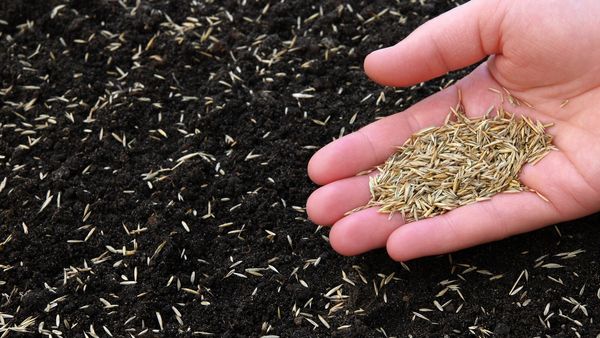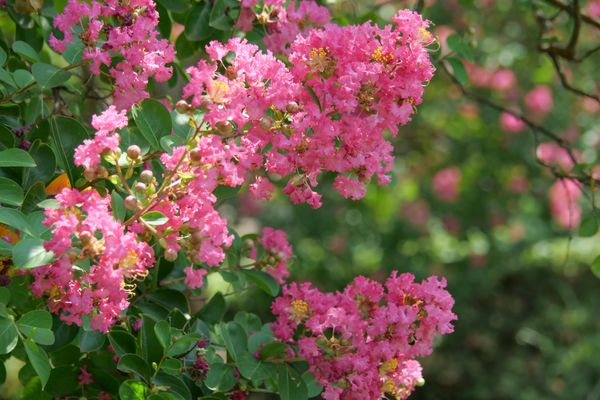
We know the feeling: you’re gazing out the window at a slightly untidy lawn, and you’re wondering whether there’s still time for one final cut before winter sets in.
Mowing the lawn can usually make the grass look better in the short term, even in winter. However, continuing to mow through the coldest part of the year can harm the grass, and perhaps damage your lawn mower too - even is yours is one of the best lawn mowers. For more tips on taking care of your mower, our complete guide to lawn mower maintenance will help keeps yours in the best shape.
Knowing when to stop cutting the grass before winter is crucial, so we’ve put together this guide with separate instructions for warm-season and cool-season lawns. You can expect to leave with a better idea of when to safely put your lawn mower away for the winter.
We had some help with this article from lawn care expert Brian Fullerton, who owns MI-based Brian’s Lawn Maintenance. In Brian’s words: “As winter quickly approaches, we need to ensure we're wrapping up our lawn, having it look its best for fall, and giving it that jumpstart for next spring.”
Why shouldn’t you mow your lawn during winter?
There are several good reasons why you probably shouldn’t mow your lawn during the coldest months of winter. These relate to:
Grass health. Cutting the grass short, at a time when it can’t grow back quickly, may leave it unable to photosynthesize sufficiently during this difficult period of the year. Furthermore, cutting the grass during frosty weather can severely damage the grass blades.
Lawn mower condition. Lawns tend to hold more water during the winter, whether it comes from rainfall, dew or thawing frost. That’s bad news for lawn mowers, because wet grass cuttings can easily get stuck inside the mower, where they contribute to an increased risk of problems such as overheating and rusting.
Insufficient growth. Grasses tend to enter a state of dormancy, with little or no growth, when temperatures are consistently below 41° F. As a result, there’s less benefit to gain from mowing the lawn.
With all that said, it’s understandable that lawn-proud homeowners may feel the urge to mow during winter. Some grasses keep growing year-round, especially in a mild climate, and this can lead to unmown lawns looking untidy over winter.
The good news is that you might not need to stop cutting the lawn entirely, if conditions are sufficiently mild and dry. In fact, lightly trimming the lawn during winter may help to remove unwanted debris such as fallen leaves, which could impair the quality of the grass. However, you certainly should not mow the lawn in frosty, freezing cold or very wet conditions.
If you’ve decided to defy mainstream opinion and mow during winter, just be sure to set the mowing height at a high setting, as this will minimize the risk of subsequent frost damage to the grass. Also, remove any grass cuttings after mowing, as this will maximize the availability of sunlight to the living grass.

Cool-season grasses vs warm-season grasses
The type (or types) of grass found in your lawn will affect your ideal time to stop mowing for the winter. As lawn care expert, Brian Fullerton, puts it, “It’s important to know what your turf type requires to give it the best chance to survive winter and also bounce back strong next spring.”
When to stop mowing cool-season grasses before winter
If you’re in a region of the US where temperatures are often cool (or in the UK or Canada), then it’s likely that your lawn is made up of cool-season grasses, which thrive in a colder climate. The following are common examples:
- Kentucky bluegrass
- Fine fescue
- Perennial ryegrass
- Tall fescue
These grasses are usually found in the upper two-thirds of the continental United States, with tall fescue particularly common in the transitional zone between the upper and lower thirds of the country.
For lawns made up of cool-season grasses, it’s generally advised to stop mowing in November, before starting again around April.
When to stop mowing warm-season grasses before winter
In the warmer southern states of the US, and in other hotspots such as the Caribbean, warm-season grasses are generally the best choice for garden lawns. Popular examples of these heat-loving grasses include:
- Bahiagrass
- Bermudagrass
- St Augustinegrass
- Centipedegrass
- Zoysiagrass
- Carpetgrass
Warm-season grasses tend to have a longer winter no-mow season than cold-season grasses do. For warm-season lawns, it’s generally advised to do your last mow of the year in October (or perhaps even September), and then recommence mowing in April or May.
If you need something to pass the time, during the no-mow season, you could try improving your lawn’s pH balance. Check the pH levels of your soil using a soil meter, and make adjustments to the soil necessary.
A pH of 6-7 is best for cool-season grasses, while warm-season grasses sometimes like a slightly more acidic soil, with a pH around 5.5-6.5. You can raise the soil’s pH by adding lime (the mineral), or lower it by adding sulfur.
The perfect end-of-year cut
When preparing to give your lawn its last mow of the year, remember that it’s worth setting up your lawn mower carefully beforehand, as this cut will affect the grass for a long period.
According to lawn expert, Brian Fullerton, you might want to set your mower’s cutting height a little lower than usual for this cut – especially if your lawn is made of Kentucky bluegrass, a cool-season grass.
“For folks in the Midwest or elsewhere with Kentucky Blue turf, having that final ‘buzz cut’ (with the lawn mower’s blade height on a low setting) before winter gives the lawn the best chance to prevent snow mold and turf damage during the colder months,” says Brian.
It’s also a good idea to consider the overall health of the lawn, before making this final cut. If the lawn has faced some challenges during the preceding months – whether that means heatwaves, droughts, disease or intensive lawn treatments such as scarification – then you might want to leave the lawn relatively long during the winter, to encourage photosynthesis and regrowth.










